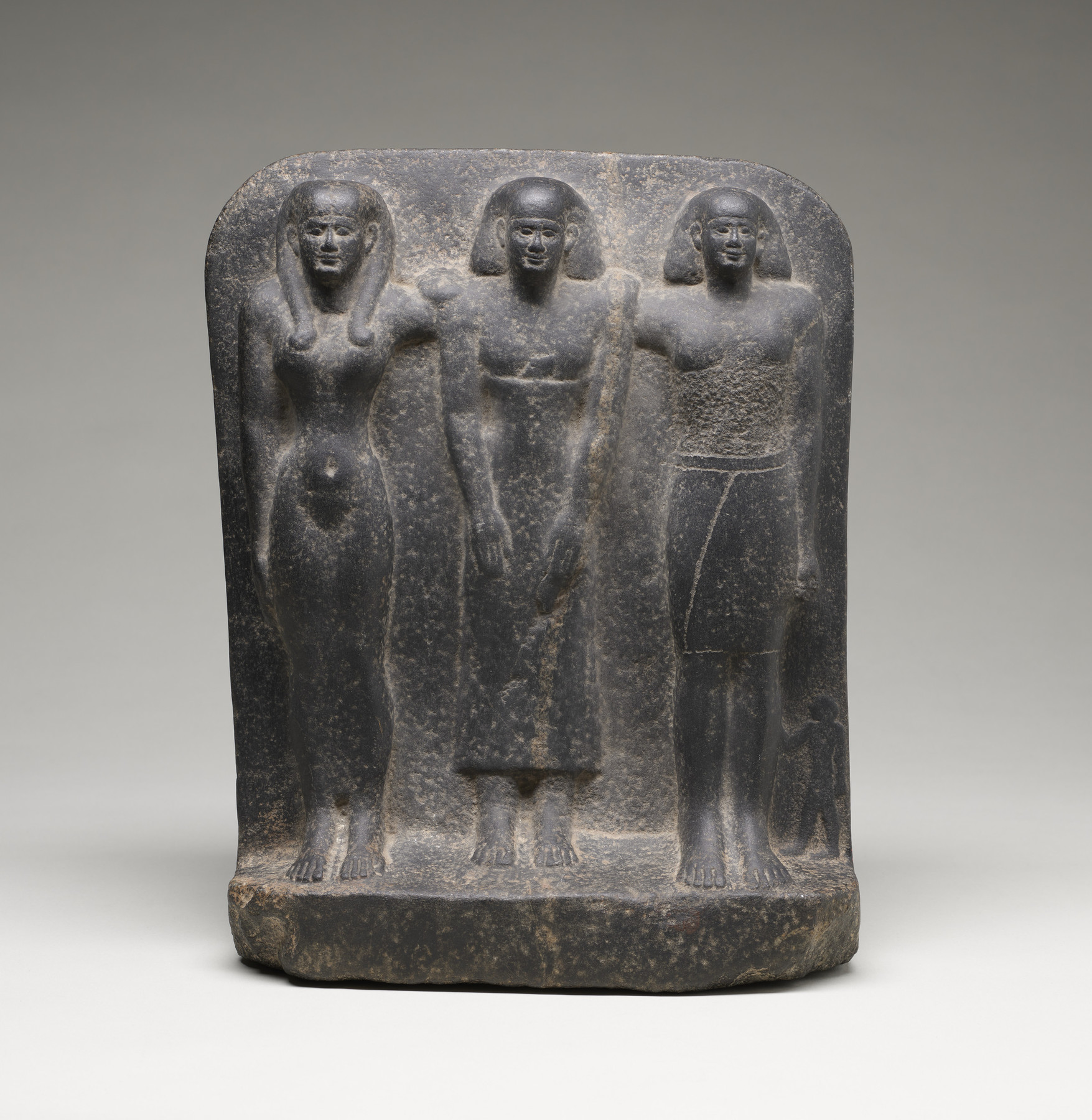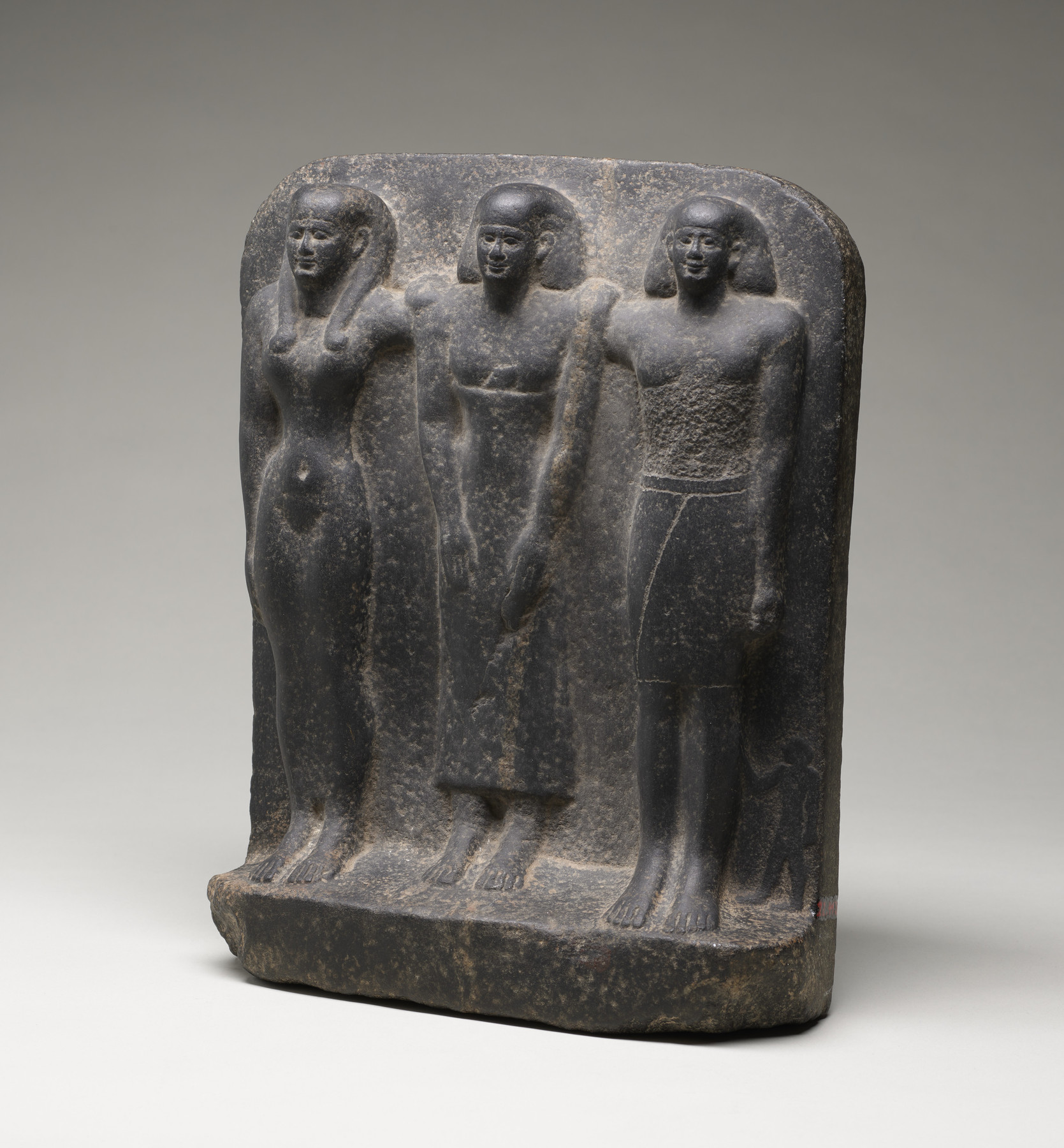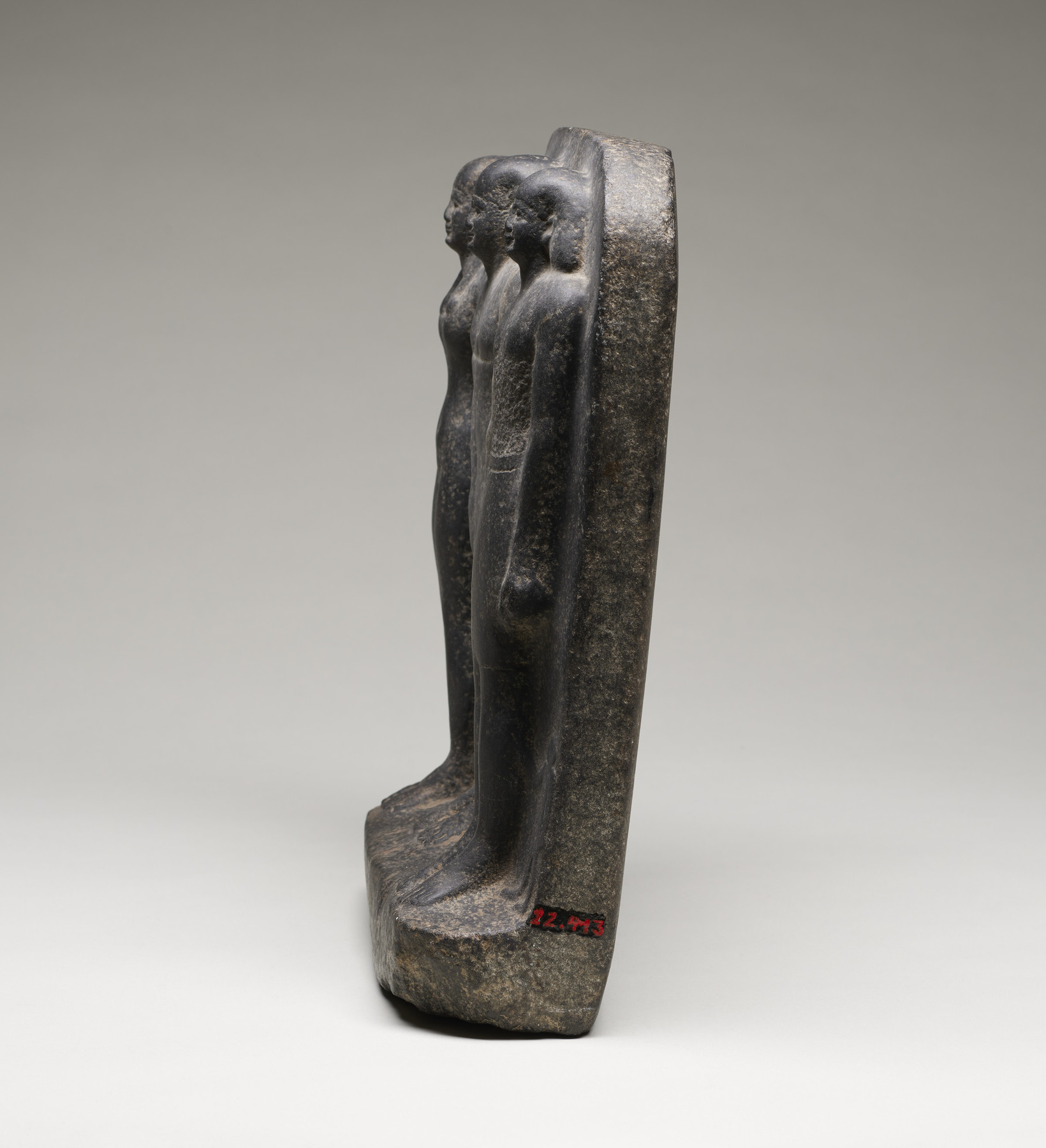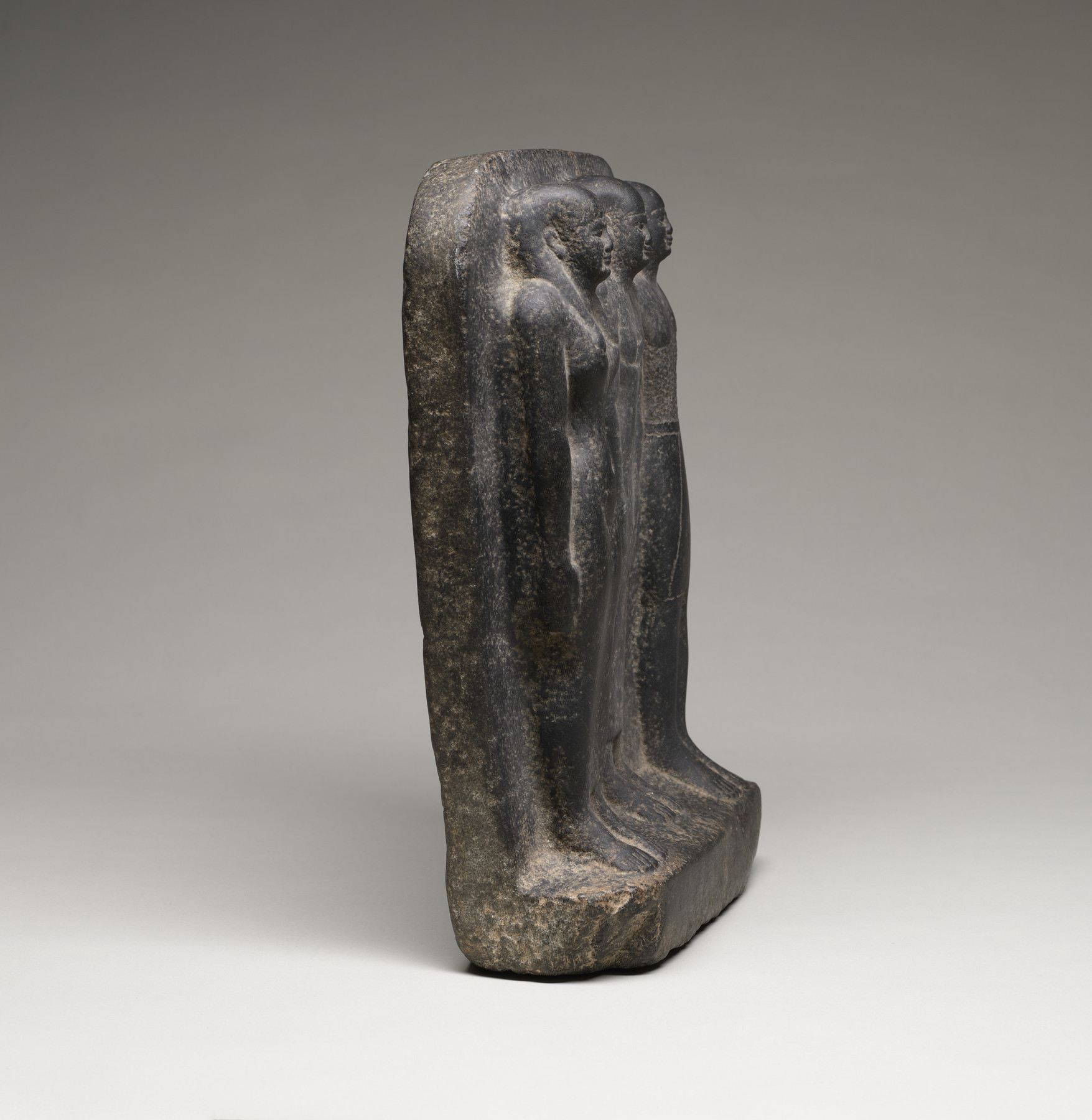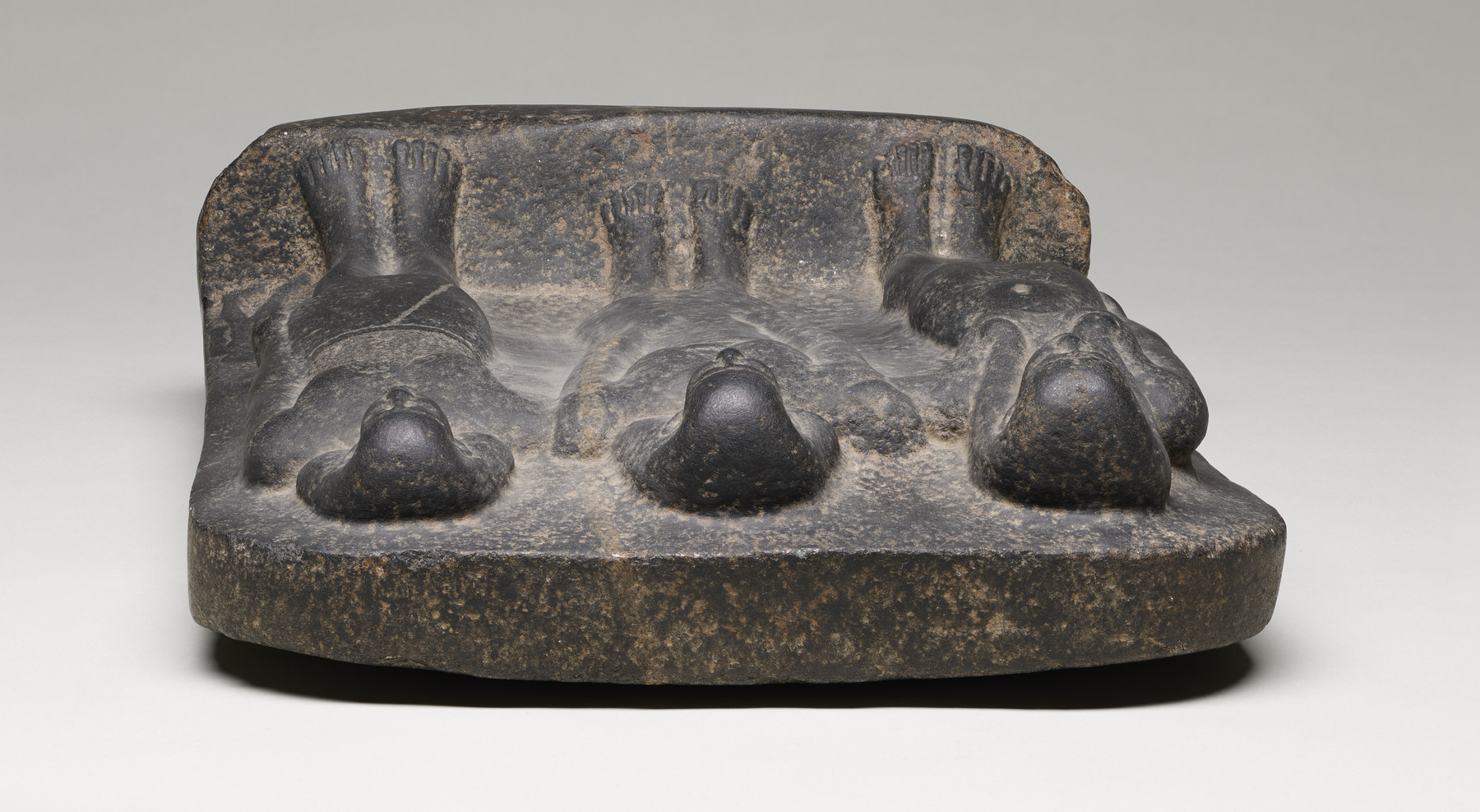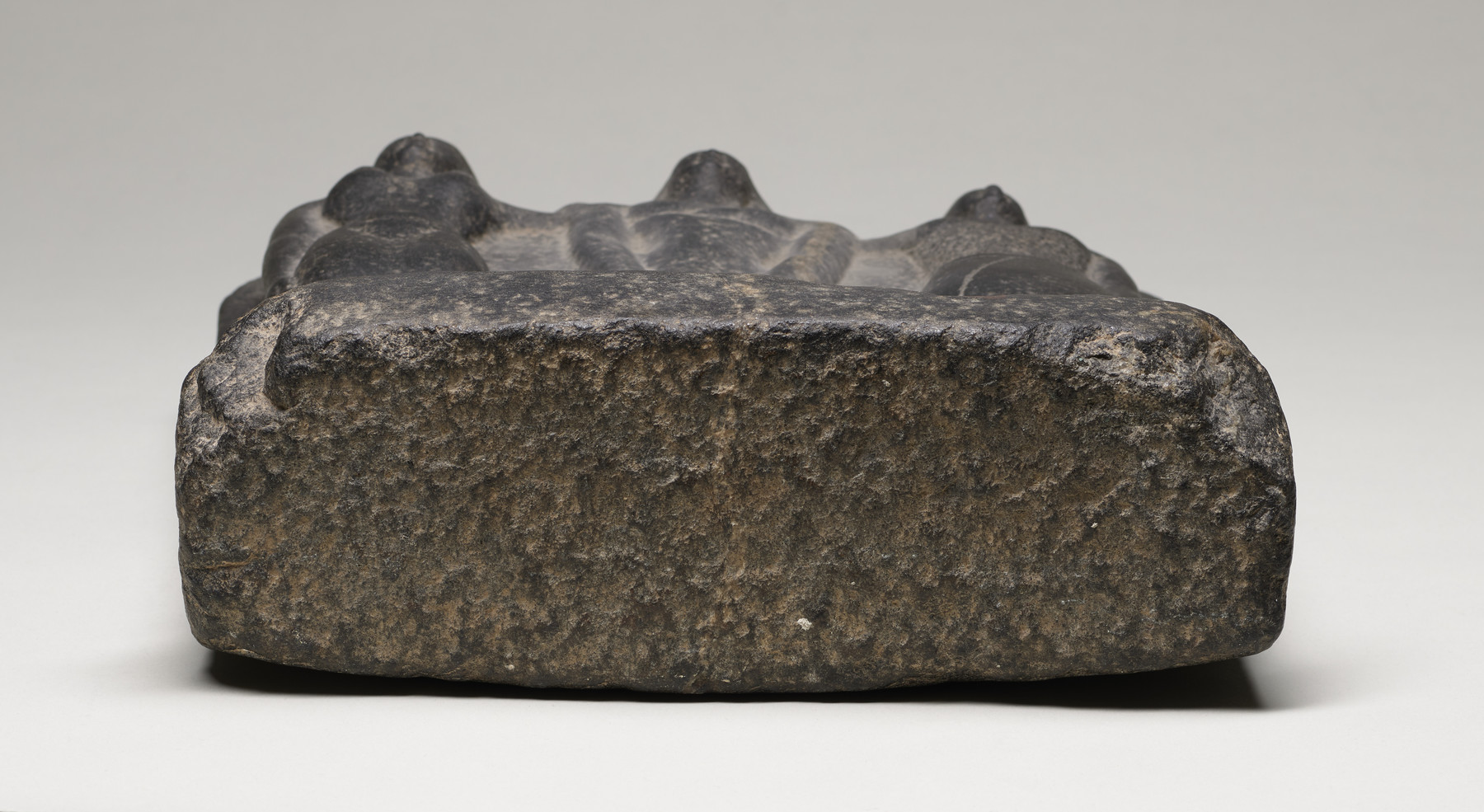Family Group of Three
(Ancient Egypt and Nubia )
This statue group consists of two men and a woman and a flat relief carving of a small child, created during the Third Intermediate Period or Late Period with a style that archaizes to the Middle Kingdom.
The figures stand upon a low rectangular base with rounded corners and against a rectangular back support with rounded corners. It is assumed, based upon other examples that these figures form a family group, but exactly what the relationships are is uncertain due to the lack of an inscription. The costumes and body styles of the figures archaize to the Middle Kingdom but the faces are clearly much later. The central male figure represents the person of the highest status. He wears a long, high waisted garment tied just below his pectorals. His arms are straight and his hands are placed flat against the fronts of his thighs. His left arm is slightly longer than his right. Both men wear a simple bag wig. The man to the left stands with his left arm hanging straight, his hand clenched into a fist. His right arm is around the back of the central figure and only his hand is visible on the shoulder of the central man. He wears a short, wrapped kilt with a belt. The area between his pectoral and the belt of his kilt is very rough and is appears that originally he had a higher waisted garment which was modified.
Next to the left leg of the left man there is a depiction of a small naked child. The carving is rough, very flat raised relief. Perhaps this is a representation of the child of the left man. The woman stands to the right of the central figure and wears a sheer ankle-length sheath gown. Her breasts, abdomen and pubic area are clearly visible beneath her garment. Her right arm hangs at her side with her hand flat on her thigh while her left arm crosses behind the second figure and her hand appears on his shoulder. She wears a Hathor style wig with curling lappets resting upon her breasts. She stands in the position of the second highest status.
Perhaps we have a husband and wife with an older son and either a very young second son or a grandchild. The quality of the carving of the child suggests that this figure was added as an afterthought. A major crack runs from the top of the piece to the bottom through the body of the central figure. The surface is quite pitted and the left front corner of the base has been broken away.
Provenance
Provenance (from the French provenir, 'to come from/forth') is the chronology of the ownership, custody, or location of a historical object. Learn more about provenance at the Walters.
William T. / Henry Walters Collection, Baltimore [date and mode of acquisition unknown]; Walters Art Museum, 1931, by bequest.
Conservation
| Date | Description | Narrative |
|---|---|---|
| 10/21/1998 | Examination | survey |
Geographies
Egypt (Place of Origin)
Measurements
H: 14 in. (35.5 cm)
Credit Line
Acquired by William T. or Henry Walters
Location in Museum
Not on view
Accession Number
In libraries, galleries, museums, and archives, an accession number is a unique identifier assigned to each object in the collection.
In libraries, galleries, museums, and archives, an accession number is a unique identifier assigned to each object in the collection.
22.413

